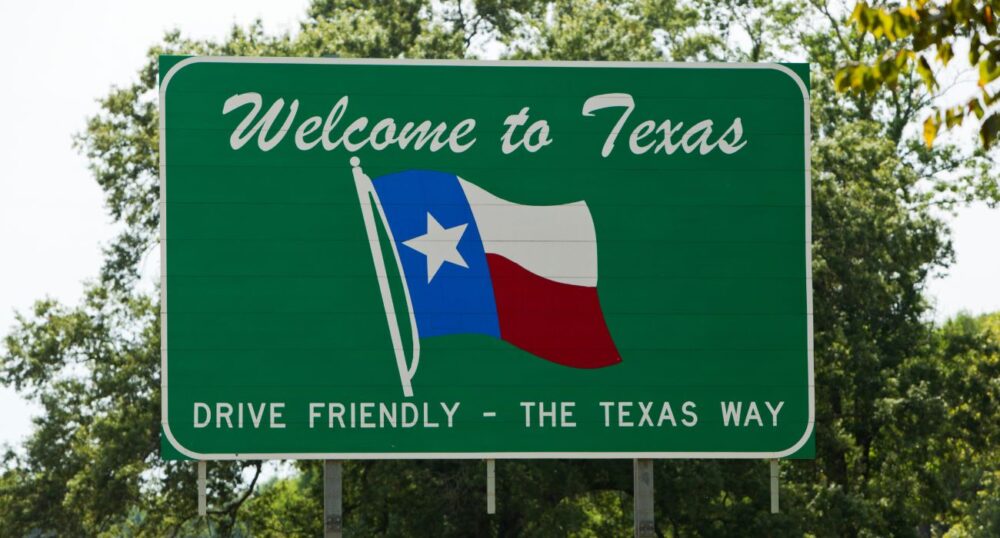There is a lot to love about the Lone Star State, including bluebonnets, backyard barbecues, Tex-Mex, king-sized cattle ranches, pickup trucks, and cowboy hats, to name just a few of its many charms. However, one recent study ranked Texas as one of the worst states to live in based on four categories.
The study was compiled by Scott Evans, the managing director of Pink Storage in the United Kingdom, which leads one to wonder if the researcher has ever set foot in Texas. Probably not.
Nevertheless, he calculated his rankings on data from the U.S. Census Bureau, the Bureau of Labor Statistics, the FBI Crime Data Explorer, the CDC, and other sources, comparing the 50 U.S. states based on the economy, childcare and education, crime rate, and housing affordability.
“Moving home [sic] is one of the biggest decisions that you will have to make during your lifetime and if you are moving across state lines the move can be even more difficult,” Evans said. “Everyone will have different criteria when moving homes, but most people will want to live in an area with affordable housing, good job prospects and low crime levels.
“Our study focuses on these core principles and should give some insights into what can be expected when moving to a certain state.”
Texas was ranked as the No.6 worst state to live in, right behind No.5 California, No.4 South Carolina, No.3 Arizona, No.2 Tennessee, and No.1 Louisiana. In the four major categories rated, Texas ranked sixth-worst for economy, eighth-worst for housing, ninth-worst for crime, and 32nd-worst for childcare.
However, that assessment of the Texas economy flies in the face of recent reports from several quarters. The Lone State State was crowned “2023 State of the Year” by Business Facilities magazine for its corporate relocations, business expansions, and job creation. The state’s economy expanded faster and added more jobs over the past year than any other state in the U.S. last year.
Drilling down a little deeper, Evans examined 16 metrics across the four broad categories, including average income, average commute time, total hours worked per week, unemployment rates, childcare costs per year, cost of going to college, graduation rate, life expectancy, violent crime, property crime, auto crime, police per capita, housing affordability, days on the market, house price change and utility bills. These metrics were scored on a scale of 1-100, with 100 representing the worst score.
The worst ranking for Texas came from Hours Worked, where the state landed with a score of 99. The average number of hours worked was 43.6, just behind Lousiana with 44.3 hours. In comparison, Alaska had the fewest hours worked, with 31.3.
Commute Time and Unemployment in Texas each scored an 88. Texans’ average Income scored 78, and Utility Bills scored 73.
In the crime category, Police per Population scored 94, Auto Crime scored 91, Violent Crime scored 89, and Property time came in at 87.
In Dallas, the third-largest city in Texas, crime continues to be a problem that hampers the city’s growth. Although the local police force implemented a violent crime reduction plan in 2021, overall crime has continued to increase, with murders jumping 15% in 2023 compared to the previous year. The city logged 18,848 motor vehicle thefts last year, an increase of 40% over 2022.
The crime situation in Dallas has been exacerbated by a chronic shortage of police officers. Although a city analysis showed that approximately 4,000 officers are needed to maintain public safety, Dallas currently has about 3,000 officers on its police force.
Some of the state’s other struggle areas included home sales, with House Price Change scoring 97, Average Days on Market scoring 92, and Housing Affordability scoring 75, per Evans’ report.
However, the Dallas-Fort Worth metro area saw the second-largest rise in home sales in the nation in January, up 14.2% year over year, with an average time on the market of just 55 days, according to a RE/MAX National Housing Report.
In the education category, Texas scored a grim 94 for its Graduation rate and a 73 for the cost of College. For instance, among the state’s low-performing public school districts is Dallas ISD, whose four-year graduation rate was a mere 81.1% for the 2021-2022 school year.
Among all the metrics, the state’s best score was for Childcare costs, coming in at 66. The state scored an 82 for Life Expectancy.
According to Evans’ study, the best state to live in is North Dakota. However, that notion might raise a few eyebrows here in Texas, where a flood of newcomers have decided to call the Lone Star State their home in recent years.
Texas has experienced a 21% population growth rate over the last 13 years. Between July 2021 to the end of 2022, the population of Texas increased by 470,000, with about half of that growth coming from migration from other U.S. states.
Most native-born Texans are not in a hurry to leave the state, according to research by the Federal Reserve Bank of Dallas. Texas ranks No.1 in the nation for the rate at which natives remain in the state, with a “stick rate” of 82%. In contrast, North Dakota has the second-lowest “stick rate,” at 48.6%.

